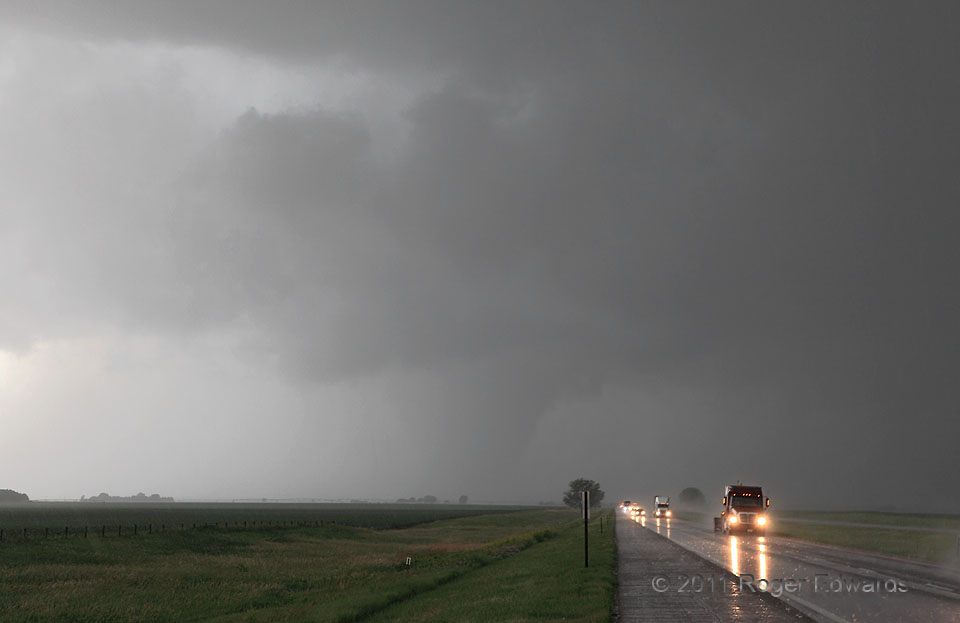We already had seen several tornadoes with a separate, bizarre, midday to early-afternoon supercell near the center of a deep-layer cyclone, well west-southwest of here. After that storm died, I knew that some young convective towers, visible on the dryline far to our east, could grow into supercells. We also had an unusual but reasonable chance to intercept the “second-phase” event via I-80—a fortuitously placed and legally fast way to get there. As we headed east, a squall line formed from those towers, then evolved into a pearl necklace of somewhat connected supercells. We shot a relative gap in the line, one that was filling thanks to an expanding supercell’s front-flank core. Several minutes after we cleared the storm, this became visible in a rear-view mirror, a few miles south of I-80 and moving northward. In the time it took to pull over into the grass and call in the report, the rain-wrapped “Hampton” tornado grew into this tapered-barrel shape, clearly endangering motorists on the Interstate. The annals of tornado history are profusely littered with stories of folks driving into tornadoes they couldn’t see. Fortunately, my fears here weren’t realized. A tornado watch was out, warnings from NWS Hastings were timely and well-broadcast for those driving with local radio turned on, and the tornado itself was just visible enough for drivers to avoid. This version of the photo, as my usual custom, is only enhanced to natural viewing level (how I viewed it, and how you likely would see it).
3 NW Henderson NE (20 Jun 11) Looking W
40.8207, -97.8498
